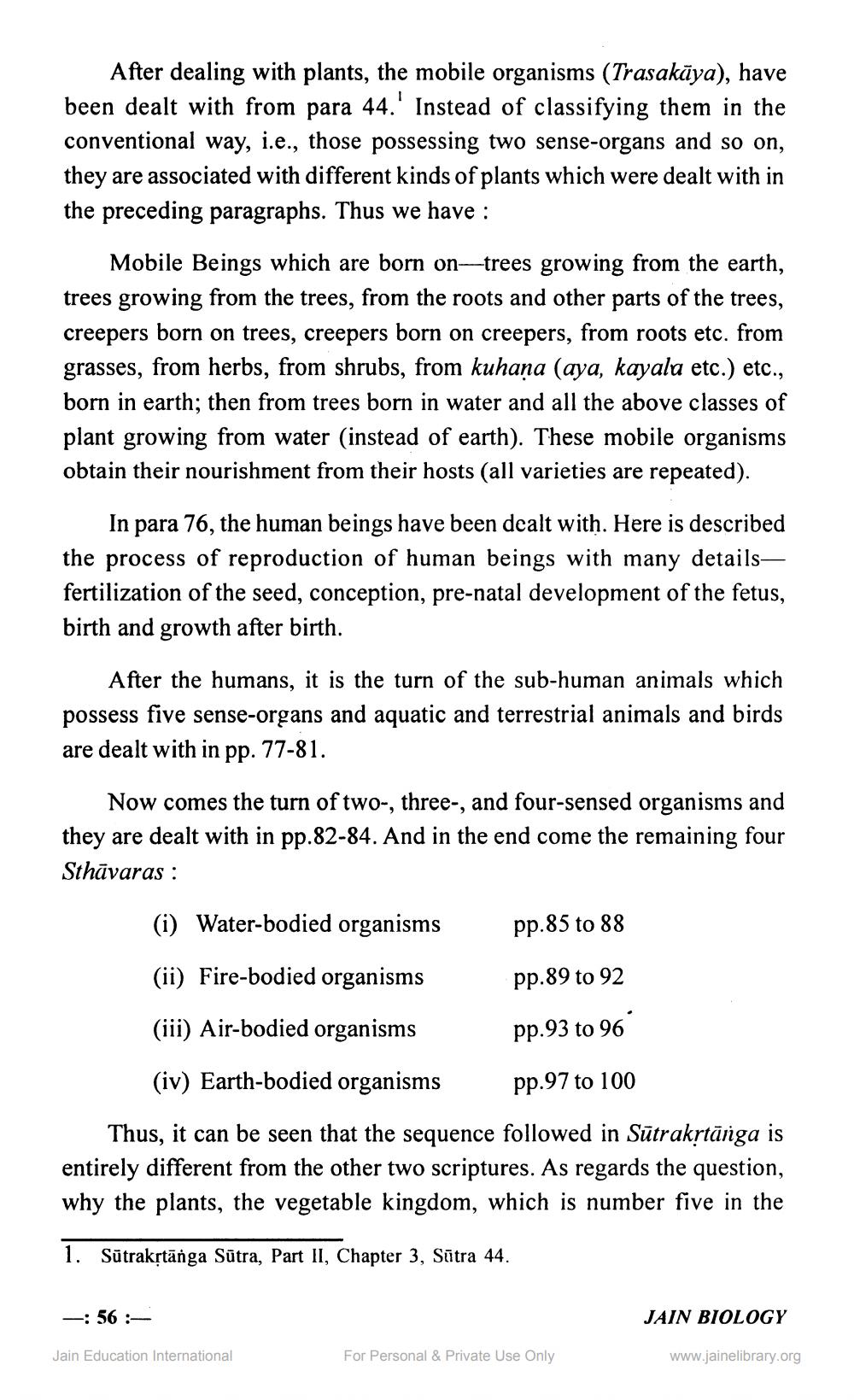________________
After dealing with plants, the mobile organisms (Trasakāya), have been dealt with from para 44. Instead of classifying them in the conventional way, i.e., those possessing two sense-organs and so on, they are associated with different kinds of plants which were dealt with in the preceding paragraphs. Thus we have :
Mobile Beings which are born on-trees growing from the earth, trees growing from the trees, from the roots and other parts of the trees, creepers born on trees, creepers born on creepers, from roots etc. from grasses, from herbs, from shrubs, from kuhana (aya, kayala etc.) etc., born in earth; then from trees born in water and all the above classes of plant growing from water (instead of earth). These mobile organisms obtain their nourishment from their hosts (all varieties are repeated).
In para 76, the human beings have been dealt with. Here is described the process of reproduction of human beings with many detailsfertilization of the seed, conception, pre-natal development of the fetus, birth and growth after birth.
After the humans, it is the turn of the sub-human animals which possess five sense-organs and aquatic and terrestrial animals and birds are dealt with in pp. 77-81.
Now comes the turn of two-, three-, and four-sensed organisms and they are dealt with in pp.82-84. And in the end come the remaining four Sthāvaras :
(i) Water-bodied organisms
pp.85 to 88 pp.89 to 92
(ii) Fire-bodied organisms
(iii) Air-bodied organisms
pp.93 to 96
(iv) Earth-bodied organisms
pp.97 to 100
Thus, it can be seen that the sequence followed in Sūtrakrtārga is entirely different from the other two scriptures. As regards the question, why the plants, the vegetable kingdom, which is number five in the
1. Sūtrakstānga Sūtra, Part II, Chapter 3, Sūtra 44.
-: 56 :
JAIN BIOLOGY
Jain Education International
For Personal & Private Use Only
www.jainelibrary.org




